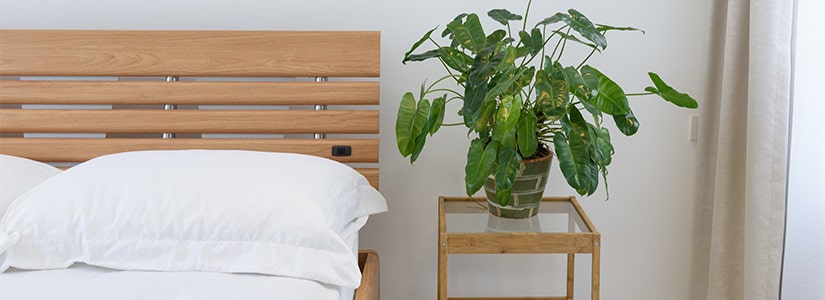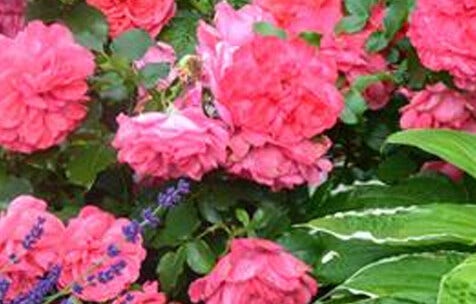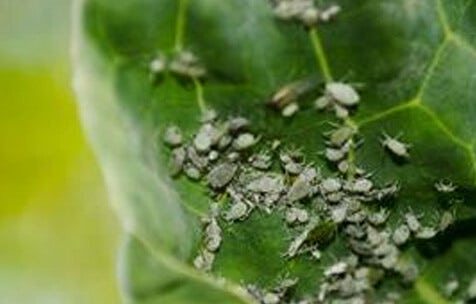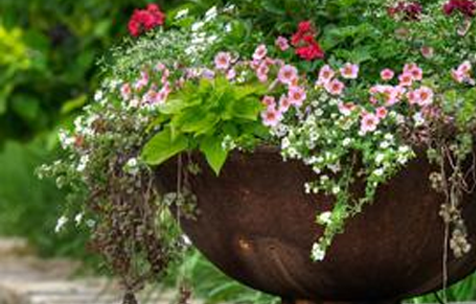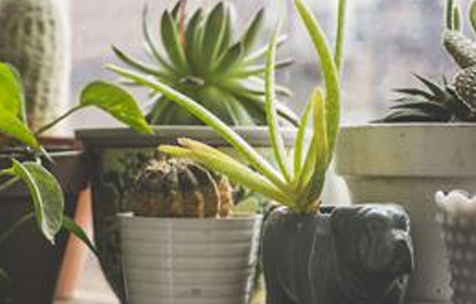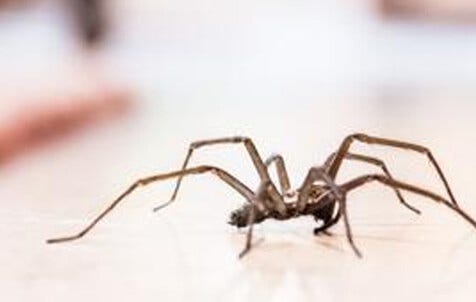

- Home
- Solution Center
- Learn
- Learn House Plants
- Growing Stunning Terrarium Layers
Growing Stunning Terrarium Layers
While the terrarium has been around since the 1800s, (invented by a frustrated physician whose houseplants kept dying), these lush mini-garden solutions are especially trendy now for good reason. With the right plants and the right light, your little ecosystem can thrive for a very long time and bring beauty, nature and a sense of otherworldly decor to your home. Here's how to make gorgeous terrariums two ways; with tropical shade-loving ferns and moss, and with the ever popular desert scape of succulents.
Overview
Your terrarium's home starts with a glass vase, bowl or jar. It can be an apothecary jar, a goldfish bowl, a Mason jar or hurricane vase. It's easier to work with a vessel with a wide mouth opening so you can fit your arm inside and maneuver plants, plus you'll have more space for a larger terrarium landscape. Since there's no drainage hole in the vase, the key to a terrarium is to create artificial drainage with layers of material unique to the type of terrarium you're making. Another key is the soil you use.
TROPICAL TERRARIUM
Design Strategy
Before you go out and buy your plants and supplies, think for a minute what you want your terrarium to look like and where it may go in your home. A tropical terrarium usually prefers bright, but never direct light. The design options are endless, so it's important to have fun and create something that expresses your personality and enhances your home's design. A terrarium can also be a vacation in a jar or vase, reminding you of your favorite getaway or future escape. It can be whimsical with plastic dinosaurs, and other small figurines like a little Buddha or even an action figure. They also look great, keeping it simple and elegant with just plants and natural materials.
Tropical Plant Terrarium Supplies:
- Hurricane vase
- Decorative rocks found in arts and craft stores or garden centers
- Activated charcoal
- Moss
- Potting soil
- Tropical indoor plants, at least 3-5
- Pebbles, recycled glass, shells, stones with sayings
- Miniature landscape accents like fairies, gnomes and little animals
Steps To A Tropical Plant Terrarium
- Fill your vase with an inch or two of decorative rocks, depending on the size of your vase. Note the total drainage layering area should be at least three inches high, and can be more depending on the size of your terrarium.
- Add activated charcoal on top of the rocks. Beware, this is a very messy product so you may opt to wear gloves and go gently as the charcoal will release a black dust. The charcoal helps absorb any sitting water and prevents odors and bacteria build-up.
- Next add moss, which you can purchase by the bag at garden centers and craft stores. Not only does this add an authentic forest look to your terrarium, but it will prevent and stop the soil from dripping to the bottom when watering.
- Potting soil follows in your layering process. Add about an inch to start because the plants have some soil you'll want to use. Then top off with more dirt.
- Time to stage your design. We used Bird's Nest and Baby's Tears, along with Purple Passion Plant with velvet looking leaves. Lay out your planting plan while they are still in their containers and see where they look best. A designer trick is to have one plant that's a focal point with a little more height along with a couple others that have some width, and cascade over your vase like a vine. There are a number of tropical indoor plant choices that will be happy in your terrarium and also flower, like Violets and Bromeliads.
- Take the plants you've selected and one by one remove some of the soil that was in the container. You may even need to trim the roots a little using garden shears. Your terrarium may be more shallow in soil than the container the plant came in and that's okay, it will grow fine.
- Once you've filled your terrarium with the plants, it's time to have fun with top dressing and any decorative accents you choose to add. We used some polished stones that have sayings like love, along with a miniature fairy and a frog.
SUCCULENT TERRARIUM
While succulents come in so many amazing colors, textures and varieties, the blue, pink, orange and yellow succulents will not live long inside unless you're prepared to take your terrarium outside in bright indirect light once a week. Otherwise choose mostly green succulents like the Jade Plant or Haworthia (seen above) which can handle the indoors better for a longer period.
Air plants which live on water and air only, and don't want to be planted in soil, can also thrive in your succulent terrarium as an accent piece and they will bloom in indirect bright light.
Succulent Terrarium Supplies:
- A vase, bowl or jar of any kind
- Pebbles
- Pea gravel
- Succulent or cactus soil
- Succulents and air plants
- Decorative rocks, sand, shells
Steps For A Succulent Terrarium
- Fill your vase with decorative rocks about an inch or so thick.
- Add pea gravel or sand on top. Note you can use activated charcoal instead, but it's messy. Pea gravel is preferred and looks better with your succulents, while helping with drainage as well as avoiding rotting and odors. You can also get colored aquarium gravel for more decorative layering.
- Now's a good time to determine where you want to plant your succulents. While they're still in their container, position them around and see what looks best, keeping in mind color, contrast texture, height and width of the plants.
- Next scoop in the succulent or cactus soil about an inch or two thick, depending on the size of your terrarium vessel.
- Before planting, remove some of the soil in the store bought containers and trim the roots depending on how long they are. Some might be several inches longer than the allotted soil. Don't worry they'll be fine.
- Now make a little hole in the soil and let the fun begin. If you don't like how your design is working don't be afraid to take the succulent out and reposition it. It's also a good idea to have a small paint brush handy to clean up any dirt or debris that may get trapped in plant crevices.
- Once all of your plants are in their new home, it's time to give it some bling! We love adding sand, tiny pebbles, recycled glass or shell chips – all can be found at craft stores and garden centers. For this project we've gone with the jade bean pebble that looks like the semi-precious stone.
- For the final touch we've added an air plant or Tillandsia, just sitting on top of the terrarium pebbles for an extra decorative pop.
Terrarium Light And Watering
The tropical terrarium never wants to be in full sun. The ideal location is inside a bright room with a dappling of indirect morning sunlight. As for watering, a tropical terrarium should be watered once to twice a week so the soil is moist but not flooded. It also likes to be misted weekly with a spray bottle of water. Think rain forest.
The succulent terrarium can handle some direct morning sunlight followed by bright indirect afternoon light. Just remember the succulent terrarium will reward you if you let it sit outside once a week (not in freezing cold) for a few hours in indirect light. Different from cacti, the succulent terrarium likes a drink, but not a downpour. In the warmer months of the year use a spray bottle and mist each succulent once every week to two weeks. In the colder months you can get away with misting lightly once every 10 days. Go with your instincts. You'll see when your terrarium is thirsty as the plants will respond and look dry.
No matter which type of terrarium you make, count on becoming addicted to this quick, easy and satisfying way of enhancing your home, air quality and life.






